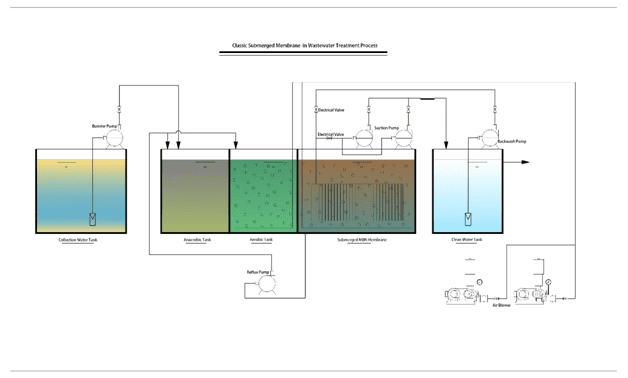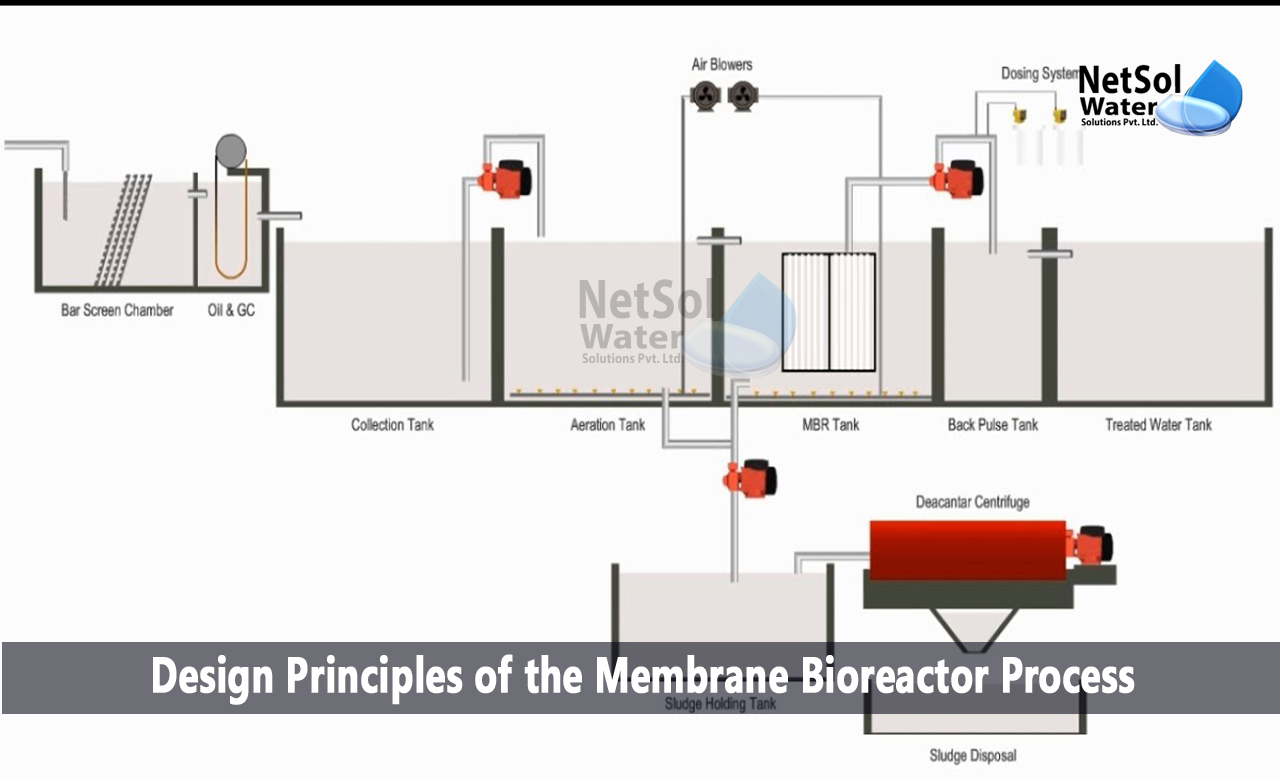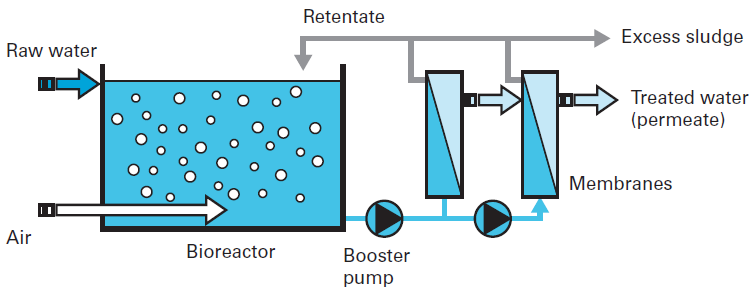Understanding the Basics of Membrane Bioreactor Systems for Wastewater Management
Understanding the Basics of Membrane Bioreactor Systems for Wastewater Management
Blog Article
Just How Membrane Bioreactors Are Transforming Water Filtration Equipments
The emergence of membrane layer bioreactors (MBRs) stands for a significant advancement in the field of water purification, combining organic treatment processes with advanced membrane layer filtration modern technologies. As international water scarcity intensifies, the function of MBRs in promoting potable water reuse and sustainable water administration becomes progressively critical.
Summary of Membrane Bioreactors
Membrane layer bioreactors (MBRs) stand for a significant improvement in water filtration innovation, as they incorporate organic therapy processes with membrane purification. This combination boosts the effectiveness of wastewater treatment by using microorganisms to weaken organic pollutants while all at once employing semi-permeable membranes to separate cured water from put on hold pathogens and solids.
The MBR system commonly includes a biological activator where the microbial populace metabolizes contaminants, complied with by a membrane filtration unit that preserves biomass and permits only clean water to go through. This dual functionality results in greater effluent top quality compared to standard treatment approaches. MBRs can be operated in both set and constant flow modes, supplying adaptability in layout and application.
Additionally, MBRs are identified by their small impact, making them suitable for city settings with room restraints. Membrane Bioreactor. They additionally enable the healing of water for reuse, hence adding to water sustainability efforts. While MBR innovation has acquired popularity in metropolitan and commercial applications, its functional intricacies and energy demands demand careful consideration during execution. Overall, MBRs go to the forefront of boosting water treatment efficiency and quality, showcasing the potential for innovative remedies in environmental management.
Benefits of MBR Technology
The assimilation of biological treatment with membrane purification uses many benefits for water filtration procedures. One of the primary benefits of Membrane Bioreactor (MBR) technology is its capacity to effectively remove both inorganic and organic pollutants, causing high-quality effluent. The membrane layers serve as a physical barrier, protecting against suspended solids and virus from passing through, which improves the total security and dependability of treated water.
In addition, MBR systems require a smaller footprint compared to conventional treatment approaches, enabling for more effective area application. This compact design is especially useful in metropolitan setups where land is restricted. MBRs additionally demonstrate functional flexibility, accommodating varying influent top qualities and circulation prices without considerable performance degradation.
Moreover, the process uses boosted nutrient elimination capabilities, specifically for nitrogen and phosphorus, which are critical for stopping eutrophication in obtaining waters. The lowered sludge manufacturing connected with MBR innovation additionally translates to lower disposal expenses, making it an affordable solution in the future - Membrane Bioreactor. Overall, the benefits of MBR modern technology placement it as a leading option for sustainable and innovative water purification systems, dealing with both environmental and financial concerns
Applications in Water Purification
Applications of Membrane Bioreactor (MBR) modern technology in water filtration are impactful and diverse, resolving numerous therapy needs throughout numerous sectors. MBRs properly incorporate organic treatment procedures with membrane layer filtration, making them excellent for local wastewater treatment, commercial effluent administration, and also drinkable water reuse efforts.
In municipal setups, MBRs are significantly employed to boost the high quality of dealt with wastewater, enabling for compliance with rigorous discharge guidelines and helping with the recycling of water for irrigation and non-potable usages. Their portable layout additionally makes them appropriate for urban atmospheres where area is limited.
Industrially, MBR innovation is made use of to treat process water and wastewater, specifically in fields such as food and drink, drugs, and textiles. By successfully removing impurities and suspended solids, MBRs aid markets decrease environmental influences while recuperating useful sources from wastewater streams.
Moreover, MBRs are obtaining traction in decentralized water treatment applications, where small-scale systems can be released in remote locations or developing areas. This versatility enables neighborhoods to attain sustainable water administration solutions, boosting access to clean water while lowering reliance on conventional treatment approaches.
Instance Studies and Success Stories

In an additional example, a fabric production center in Bangladesh embraced MBR modern technology to address its wastewater obstacles. The system decreased chemical oxygen demand (COD) degrees from 1,200 mg/L to much less than 100 mg/L, therefore meeting regulative standards and significantly decreasing ecological influence.
The University of Cape Town's MBR setup has confirmed efficient in dealing with greywater for non-potable reuse on school. This task not just saves safe and clean water yet likewise functions as an instructional version for lasting techniques.
Moreover, a fish and shellfish handling plant in Norway utilized MBR innovation to treat effluents consisting of high levels of organic matter, attaining over 90% pollutant removal. These study underscore MBR innovation's versatility and its crucial function in improving water top quality throughout varied applications.
Future of Water Treatment Solutions
As worldwide water deficiency and contamination challenges wikipedia reference intensify, ingenious water therapy services are coming to be increasingly important to guarantee sustainable accessibility to clean water. The future of water treatment exists in the combination of innovative innovations that enhance the effectiveness and efficiency of purification procedures. Membrane bioreactors (MBRs) go to the center of this development, combining biological therapy with membrane filtration to create high-grade effluent suitable for various applications.

Arising trends such as source recuperation from wastewater, including nutrients and energy, will additionally change treatment centers into eco-friendly hubs. Innovations in nanotechnology and membrane layer products promise improved efficiency and longevity of filtration systems.

Conclusion
To conclude, membrane bioreactors represent a significant advancement in water filtration modern technologies, properly combining organic treatment with innovative membrane filtering. The various advantages, consisting of enhanced effluent top quality and minimized spatial needs, make MBRs particularly appropriate for metropolitan applications. Their role in drinkable water reuse and lasting water management highlights their importance in addressing international water scarcity difficulties. Continued r & d will certainly better enhance the effectiveness and adoption of MBR technology, guaranteeing a durable future for water treatment options.
The development of membrane bioreactors (MBRs) stands for a considerable development in the area of water purification, merging organic therapy processes with sophisticated membrane layer filtering modern technologies. As global water shortage escalates, the role of MBRs in assisting in safe and clean water reuse and sustainable water monitoring comes to be increasingly important. They additionally enable the recovery of water for reuse, thus adding to water sustainability campaigns.As worldwide water scarcity and contamination difficulties intensify, ingenious water therapy options are becoming progressively important to make certain sustainable access to tidy water. Their role in safe and clean check out this site water reuse and sustainable water management highlights their relevance in resolving international water scarcity difficulties.
Report this page